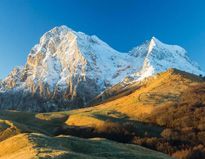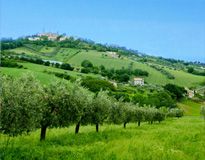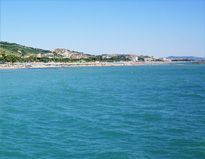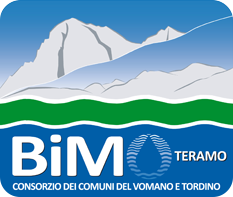

The itinerary will bring you to the discovery of three very suggestive hermitages (all placed in Isola del Gran Sasso), they are "places of the soul" absorbed in silence and quiet.
The first hermitage is San Nicola of Fano a Corno situated over 1000 ms and attainable with a comfortable path that departs from Casale San Nicola. The church is composed by an only aisle with coverage to hut and preserve, on the wall leading, the rests of frescos are almost illegible. The altar, realized by Nicola Cappelletti is composed by 24 tiles in ceramics of Castelli that represents two miracles of San Nicola. Near the church are still visible the rests of the ancient monastery of San Nicolò a Corno founded by San Piero Damiani and had been abandoning for different centuries.
The second hermitage of our itinerary is Fra’ Nicola, called also Grotta di Frattagrande.
In this place the last hermit of Gran Sasso decided to spend its days meditating.
The hermitage is situated along the course of Ruzzo stream and it raises few over Pretara. A simple stairway conducts to the entry where is set a cross. Immediately to the right, two vain communicate with presbiterial zone and from one of these part there is staircase that conducts to the superior plan. On the principal altar there is a picture that represents San Francesco di Paola (which Fra’ Nicola was deeply devoted). In the chapel to the right, immediately behind the altar there is a great vain in which you can see the sceneries of the one manger built by Fra’ Nicola.
The third and last hermitage is Santa Colomba, daughter of the Count of Pagliara that abandoned the ease of the fatherly Castle to retire here in prayer.
The church is reached by car from Isola de Gran Sasso. After having passed Pretara turns to the right for a white street up to Piane del Fiume, where you can leave the car and continue on foot toward left on a steep path that brings to the hermitage situated to 1250m of height, under the Infornace Mountain.
To his inside there is a small altar of stone, at the base of which there is an opening in which the believers can insert the head to recover or to prevent the headache (according to popular beliefs).
To the outside you find a rock on which the form of the comb of the Saint and the plants of cherry are engraved that, according to the legend, the Dove made to bloom to offering its fruits to his brother Berardo, on the occasion of his visit in January.
Known of the miracle, the day later, the whole country had hastened to the hermitage to see this extraordinary event. Since then the cult of the Saint survives especially in the suburb of Pretara where, every year on the first of September, (day of the death of the Saint) the devotees are brought in procession up to the church bringing flowers and adorn the statue guarded inside.
 en
en 













